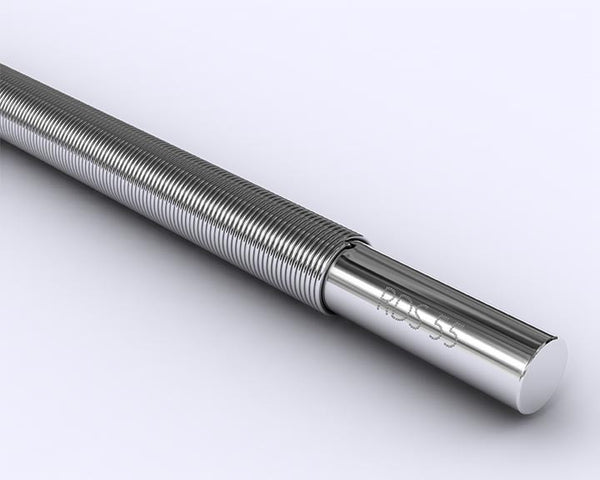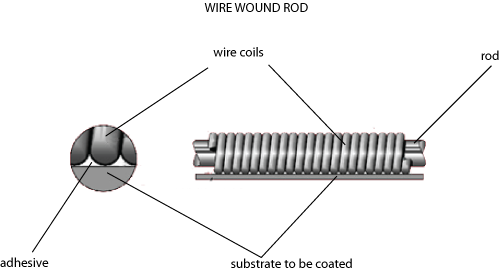When a manufacturer needs to apply adhesive to a web substrate, there are many different ways to accomplish the job. Meyer bar/rod coating is one of the most popular of these adhesive coating methods. It allows manufacturers to apply adhesive evenly and consistently, with excellent control over coating thickness.
The Mayer rod is a stainless steel rod that is wound tightly with stainless steel wire of varying diameter. The rod is used to doctor of the excess coating solution and control the coating weigh. The wet thickness after doctoring is controlled by the diameter of the wire used to wind the roll and is approximately 0.1 times the wire diameter. Rods are available in a wide variety of wire sizes to give a range of coating weights. The table below gives the wire sizes that are available and the wet thickness that can be achieved. The dry thickness is determined by the solids concentration of the coating solutions.

Now, you may be wondering how does Meyer rod coating work, and how do businesses use it? Furthermore, how can manufacturers find contract manufacturing services that can perform Meyer rod coating? This guide to Meyer rod coating will answer those questions and introduce you to the process.

Now, you may be wondering how does Meyer rod coating work, and how do businesses use it? Furthermore, how can manufacturers find contract manufacturing services that can perform Meyer rod coating? This guide to Meyer rod coating will answer those questions and introduce you to the process.
Meyer Rod Coating: Basics of the Process

In the early 20th century, the inventor Charles Mayer started using wire would rods to apply coatings to substrates. Today, his technology is known as Meyer rod coating, and it’s a widely used adhesive coating method.
The basic operation of Meyer rod coating works like this:
- Motorized rollers move a web substrate through the coating machine.
- A coating roll picks up adhesive from a pan and applies it to the web.
- A wire wound rod (known as a Meyer rod or metering rod) doctors the adhesive to the desired thickness and pattern.
- Another roller moves the substrate to the next step of the manufacturing process.
Why Manufacturers Use Meyer Rod Coating?
Part of what makes this application so useful is that it’s a relatively simple process. The simplicity makes it easy to modify to suit many different types of manufacturing applications. It also offers precise control over important factors like the thickness of the coating.
Manufacturers can use a variety of wire wound rod setups to get different thickness or application patterns. Changing the wire gauge is one way to customize the rod. Other methods of customization include using smooth rods or rods with formed grooves instead of wire. Some of these special rods offer better performance with high or low viscosity coatings.
Manufacturers can use a variety of wire wound rod setups to get different thickness or application patterns. Changing the wire gauge is one way to customize the rod. Other methods of customization include using smooth rods or rods with formed grooves instead of wire. Some of these special rods offer better performance with high or low viscosity coatings.
Applications for Meyer Rod Coating
The versatility and efficiency of this process makes it popular across industries. Some of the numerous industries that use this process include:
- Automotive
- Furniture
- Paper Goods
- Construction
- Roofing
- Textiles
- Wovens
- Film
- Cloth
- Paper
- Plastics
- Foils
Finally, Meyer rod technology is compatible with many of the most popular adhesive coatings. These include pressure sensitive hot melts and water based adhesive films. Combined, these capabilities make Meyer rod coating suitable for many different applications.
Main contents cited from CTI.
